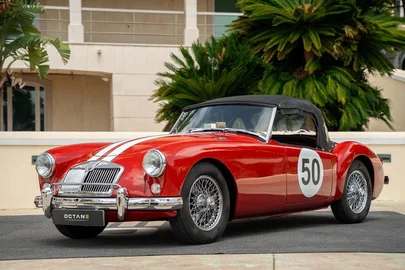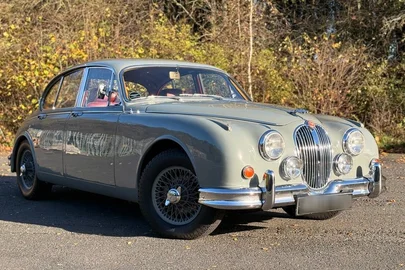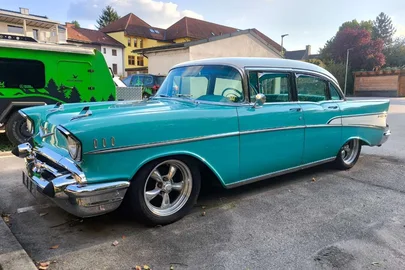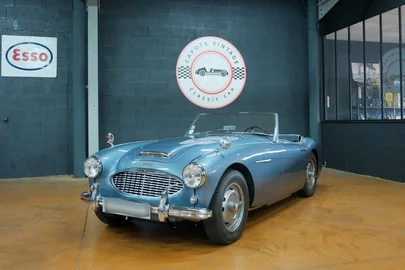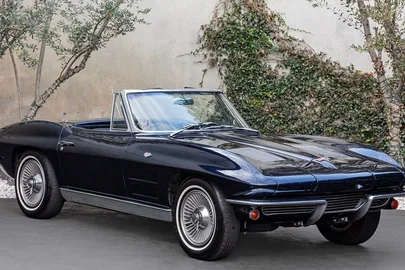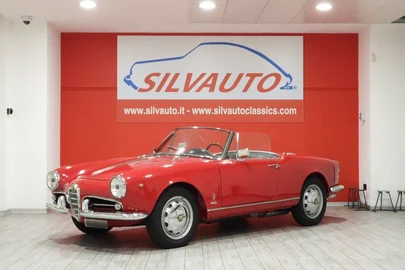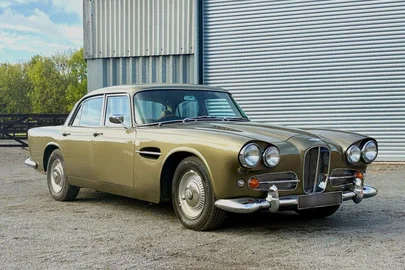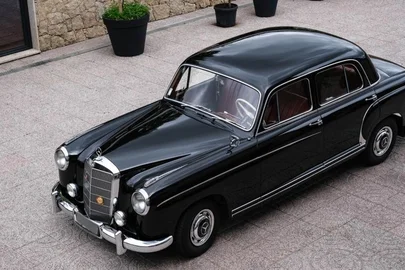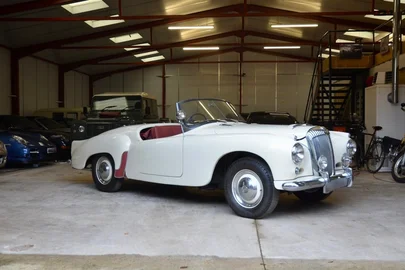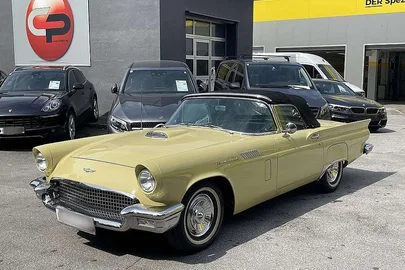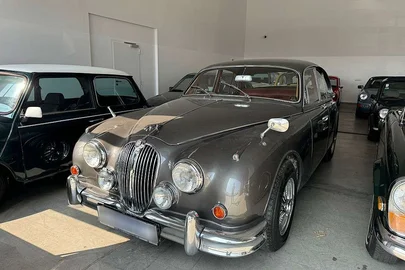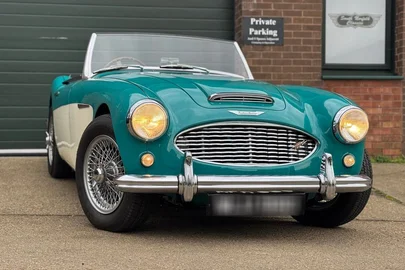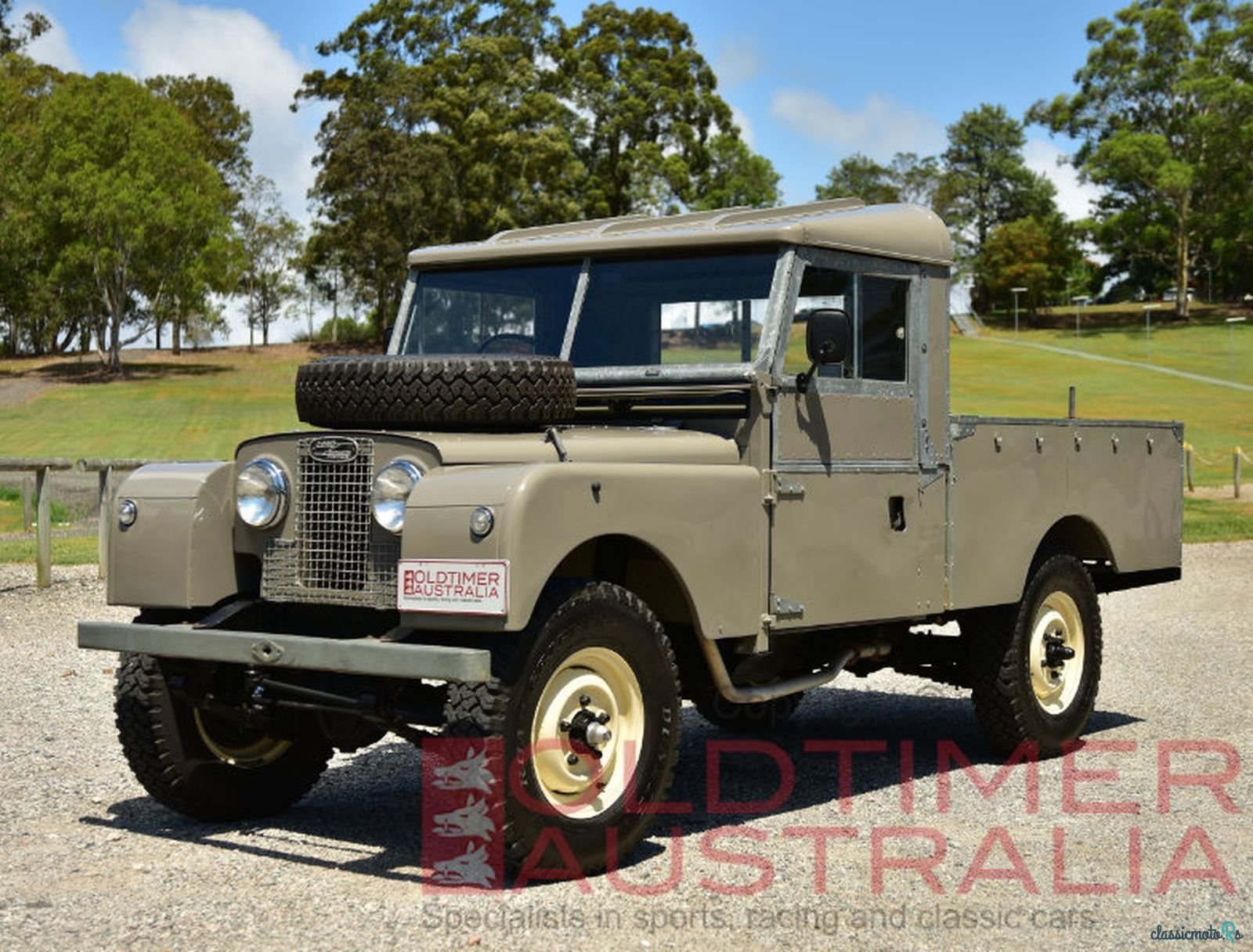
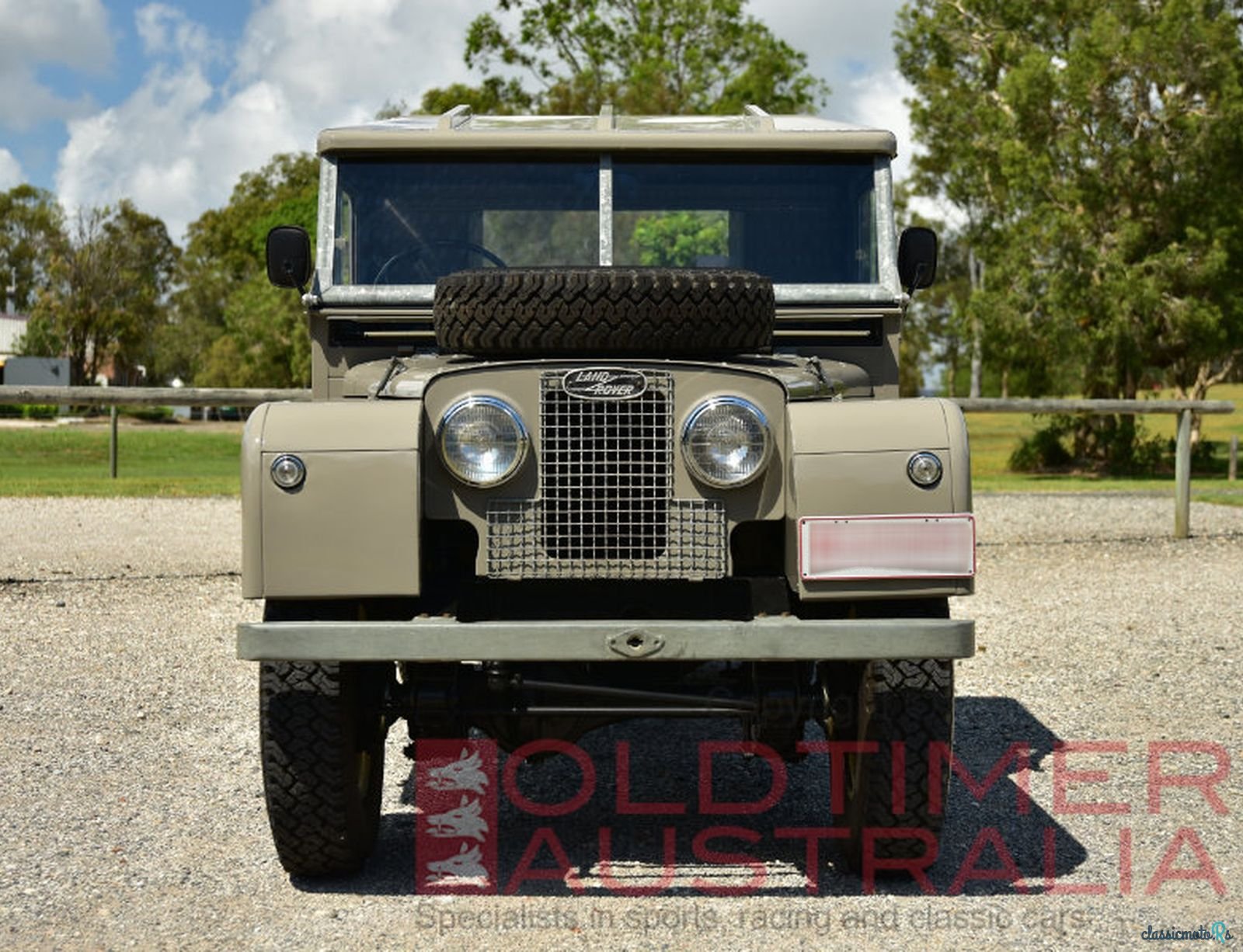
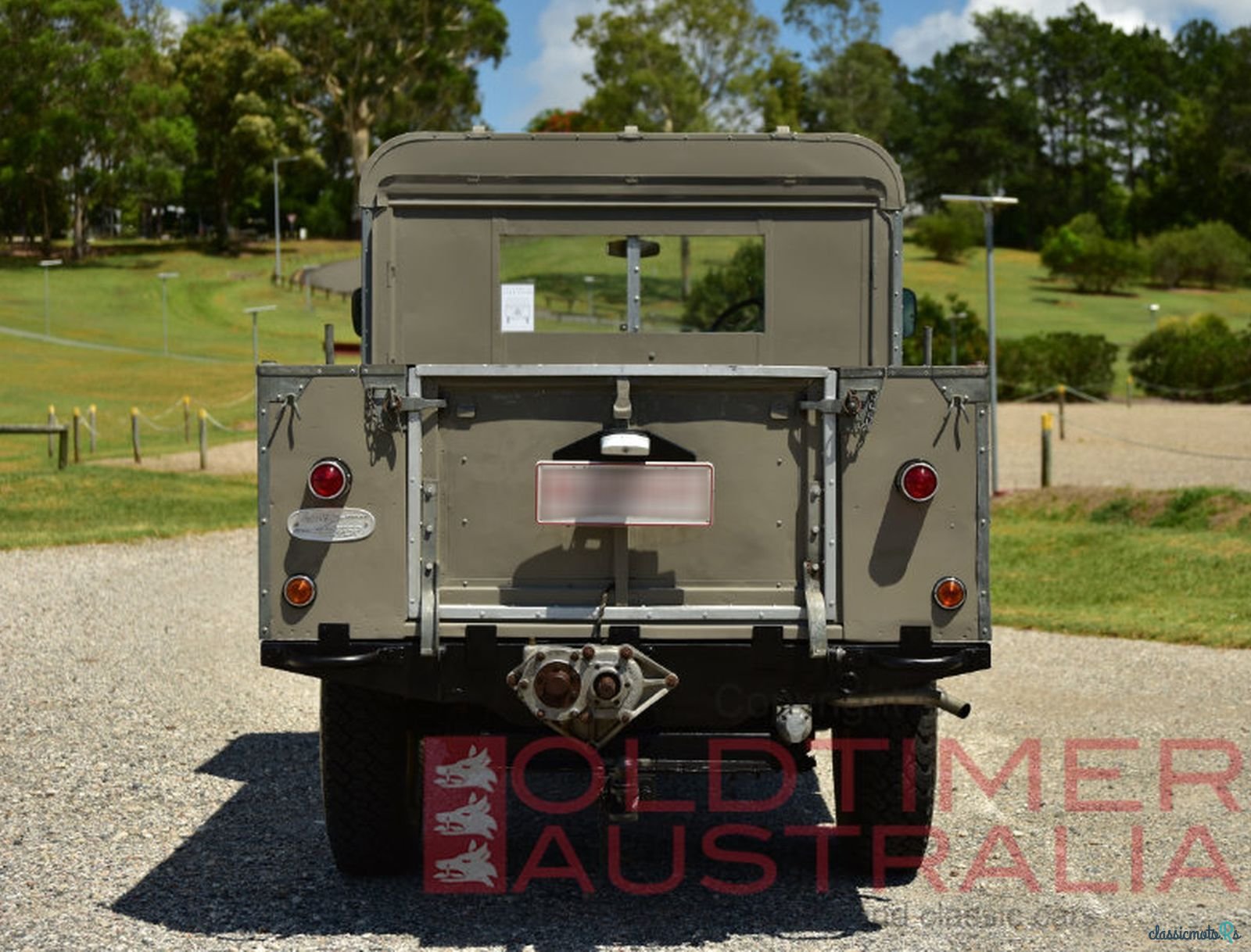
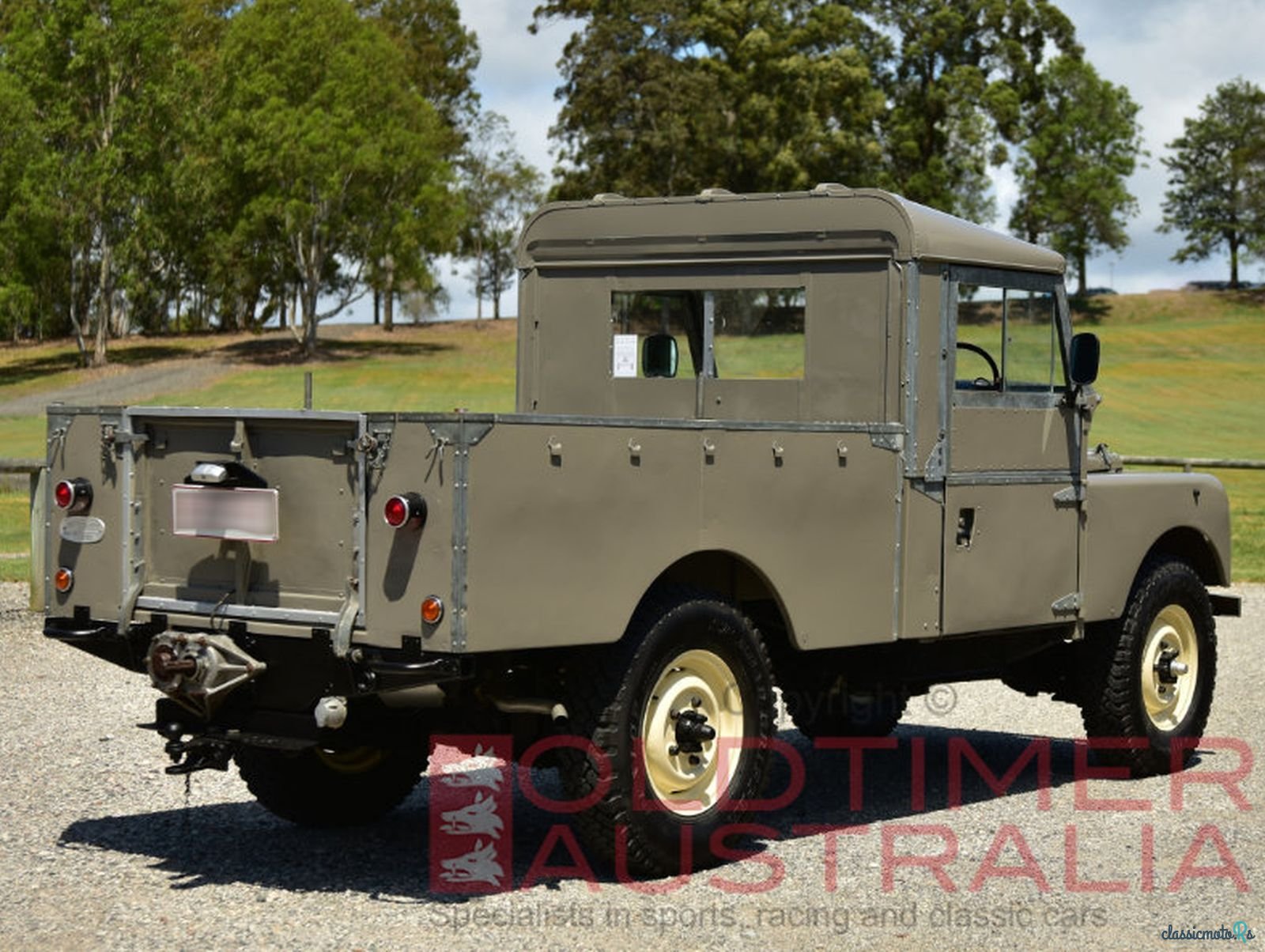
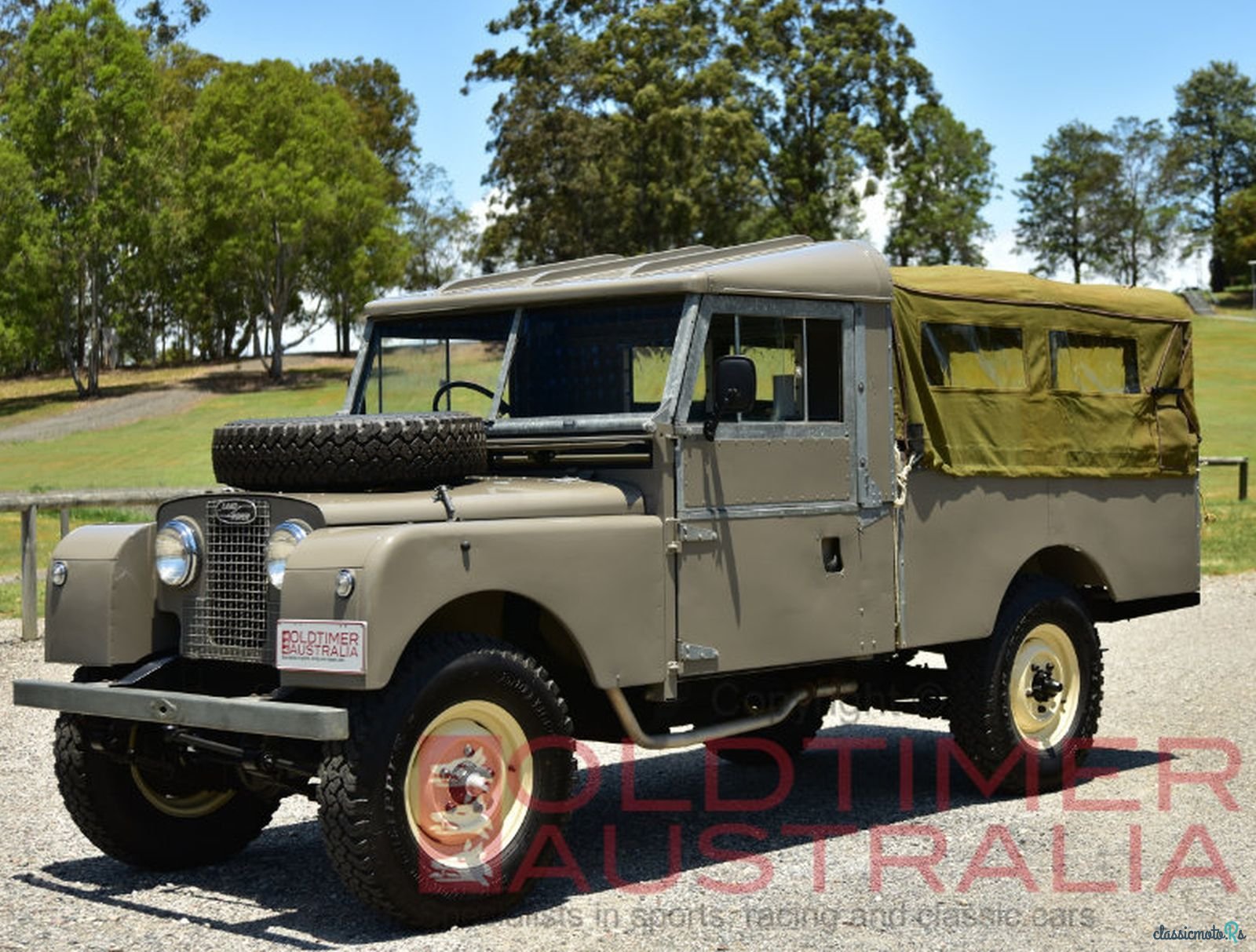
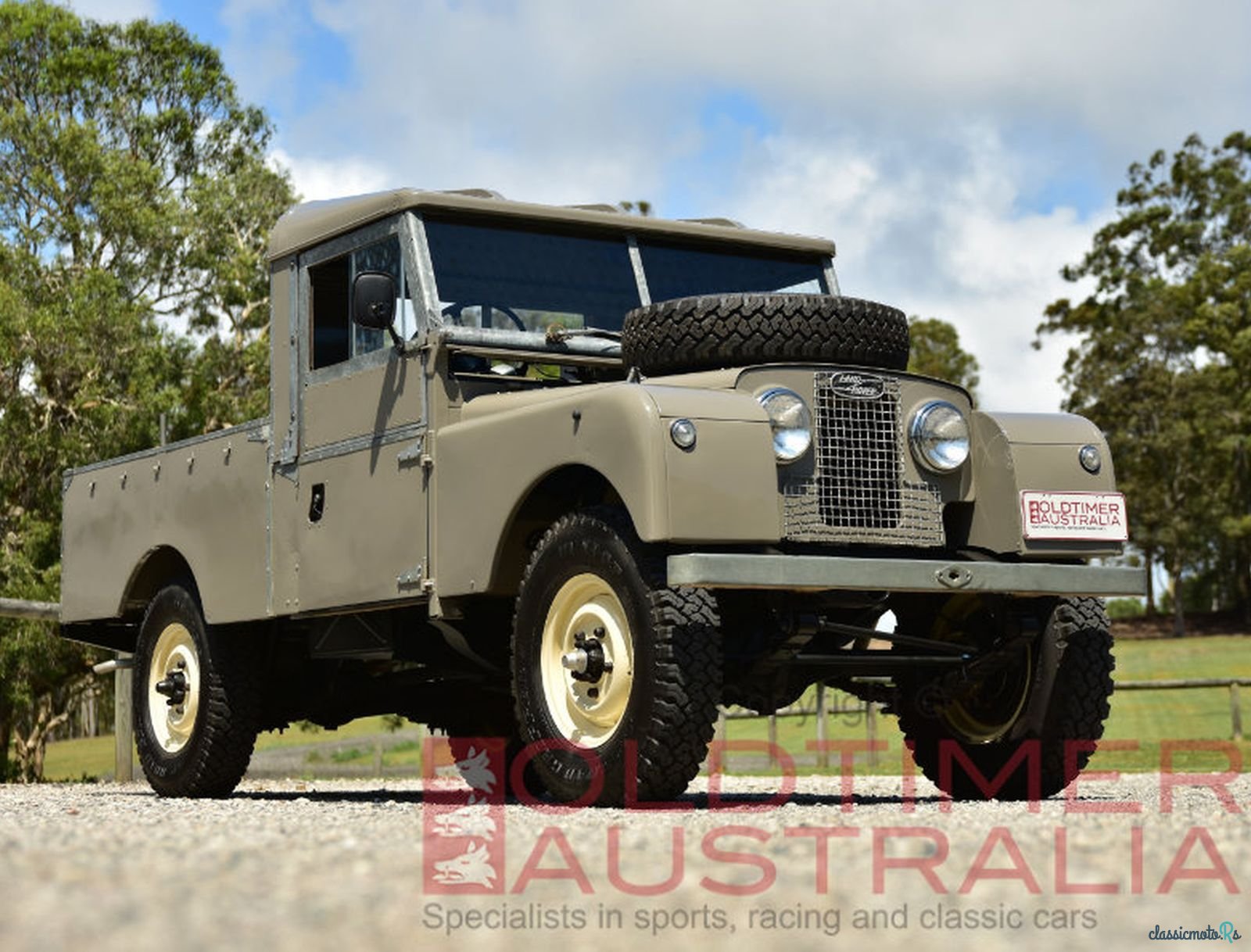
6 photos
1958' Land Rover Series I
Report This Ad!Rate This!Bookmark This
£49,950Published 27 December 2023ID: 2QB9Ez
Expired
1 year, 11 months ago
1 year, 11 months ago
Information from the owner
Body: Off-road
Age: 65 years
Fuel: Petrol
Exterior color: Grey
Seller's comments about 1958' Land Rover Series I
Details:
Oldtimer Australia is delighted to offer for sale an Australian delivered 1958 Land Rover Series 1 109″ Truck Cab Utility.
There is a British Motors Industry Heritage Trust certificate on file which confirms that this particular example was dispatched as a CKD (complete knock down) car from the factory on 27th March 1958. Its destination was Regent Motors Limited in Melbourne and it was assembled by the Pressed Metals Corporation Limited in Sydney. The certificate also confirms this car was delivered with a 2 litre petrol engine.
The current owner acquired this Land Rover in April 2019 through the Series One Shop in Newry, Victoria. The car belonged to a Victorian property owner and was described as “matching numbers car with a genuine 50, 600 miles, original wiring and lights, no holes drilled in the bulkhead, no rust anywhere, engine runs beautifully without any tap or click and pulls strongly up hill and down dale, gearbox, transfer case and 4WD selector all work perfect, body work in excellent condition, rare 109 rear power take-off fitted with the correct selector, drive shafts and centre bearing”.
At that time the car was registered in Victoria with the registration ORR 302.
There are photos on file of the Land Rover when the current owner acquired it and these clearly show this is a car that has been looked after by its previous owner.
The current owner is very fussy and when he acquired the car there were a few small things he did not like. In particular, there was a nasty scrape on the passenger side of the car, probably caused by a farm gate and at some stage indicators were added on the front guards, similar to what one would see on a Land Rover Series 2. What started out as a simple job to ‘tidy up a few things’ quickly resulted in a far more comprehensive one. He soon decided to restore the car!
The tray, doors, floor, roof, front guards and front of the car were all removed from the chassis and prepared for a repaint. The current owner was fortunate enough to have access to a spray booth through his business and everything was repainted in ‘dove grey’. There are photos on file of the work done.
At the same time the car was given a complete mechanical overhaul. The engine, gearbox, transfer case, differential, radiator and the starter motor were all reconditioned. The following new components were sourced and installed: a water pump, shock absorbers, suspension bushes, exhaust, brakes and brake lines. The owner also installed a new wiring loom and a new set of tyres were fitted
Inside the cabin, a set of new Exmoor seats were fitted, the steering wheel was refurbished, a new steering switch for the indicators was installed and other miscellaneous items were either refurbished or replaced.
Where possible, all genuine Land Rover parts were used for the restoration. The project was completed in mid-2022 and the car was subsequently registered in Queensland.
The end result is simply magnificent. This Land Rover presents essentially like the day it was assembled by the Pressed Metals Corporation Limited in Sydney back in 1958!
This Land Rover can be configured in different ways as it is truly a multifunctional vehicle. It can be used as shown in the photos with a steel truck cab style roof over the cabin and the open tray. There is a canvas canopy to cover the tray. The truck cab style roof can be removed and a full length canvas roof, which expands all the way from the front wind screen to the rear of the tray, can be fitted giving it that ‘safari’ look. There is also a separate windscreen with the car which, when installed, can be folded down over the bonnet.
As we mentioned before, the presentation of this Land Rover is simply magnificent. It would not be out of place in a Land Rover showroom today next to its more modern brothers and sisters.
Today the odometer reads 61, 764 miles.
This Land Rover certainly makes an impression when you walk up to it. The body work is in excellent condition and the paint work, which is only three years old, presents exceptionally well. The external trim is minimalistic and it all presents similarly well. The windows are a combination of glass and Perspex. The glass is all in good condition, though the Perspex windows are showing some scratches and sign of wear.
The steel wheels are in excellent condition with no sign of any curb rash or damage. They are shod with Dunlop SP Road Gripper tyres, size 7. 50R16 and they are date stamped 4019 (week 40, 2019). Not surprisingly, the tyres are in excellent condition as the car has been used sparingly since it was restored.
Inside the cabin everything looks fresh. As one would expect in a Land Rover it is all very basic. The seats are new and firm. Aftermarket seat belts have been fitted for safety and there are new mats on the floor. The instruments are clear and appear to be in good working order. The steering wheel has been refurbished and is in excellent condition.
For our photo shoot we fitted the short canvas top on the car and that can be done with relative ease. It is a good fit and the canvas is in very good condition. The long canvas cover is also in good condition with just some minor discolouration. We did notice a small tear (approx 1cm) on the rear flap.
The rear tray has new rubber mats to protect the paint.
The car starts easily, though it does require the use of the choke when the engine is cold. The engine settles into a smooth idle fairly quickly but performs best when it has warmed up. The gearbox has synchro on 2nd, 3rd and 4th gear when shifting up, and only 4th and 3rd on the down shift. As a result, this Land Rover is for ‘real drivers’, but you soon get the hang of it.
Out on the road this Land Rover just goes about its business. The engine revs freely and performs well. The gearbox, whilst maybe a little bit agricultural, does what it is supposed to do and once you get the hang of it the gear changes are relatively smooth. The gearbox sound good and there is no wining from the gears.
We decided against going off-road on our test drive, but we did test the four-wheel drive system and it works flawlessly. The transfer case engages and disengages the four-wheel drive system exactly the way it should. This car is fitted with a PTO at the rear, which we understand to be in working condition.
Accompanying the car is a short canvas cover, a long canvas cover, a second wind screen (which you need when you fit the long canvas cover on the car), all the hardware needed, both for the short canvas cover and the long canvas cover and a Land Rover Series 1 instruction manual. There is also a spare wheel mounted on the bonnet, which can be easily removed.
These Land Rovers are obviously very functional for their intended purpose, but like micro cars they are now highly collectable classic cars.
This one is fabulous!
Highlights:
- Recently refurbished Australian delivered late series Land Rover Series 1 109″ Truck Cab Utility.
- Comes with truck cab, short canvas cover and long canvas cover.
- Recent restoration.
- Very well presented.
- Ready to be used and enjoyed.
Price: $89, 950
Background:
One of the fundamental principles of economics is the law of supply and demand. During World War II the US army had a need for a light 4WD vehicle capable of carrying troops as well as cargo. And so the Jeep was born. From 1941 through until 1945 Willys and Ford were the major supplier of Jeeps, in various configurations, to the US military and their allies.
The history of the Rover Company dates back to the mid 1800s when it was selling sewing machines and then ‘safety’ tricycles and bicycles. By the 1930s, it had evolved into a car company but was hit badly by the Great Depression. In common with many British industrial companies during World War II, its factories were turned over to the war effort and produced engines for tanks and aircraft. By 1945 and the end of World War II, Rover found itself with two excellent factories and a highly skilled workforce. It was looking at restarting car production and had ambitious plans to build 20, 000 cars per year. A new model, the M’-Type was dropped when it became clear that it would be unsuitable for export and that tooling costs would be excessive. Plans to produce 15, 000 of the pre-war designs per year were quickly quashed by the Government which refused to allocate steel for more than 1, 100 cars per year. This serious shortfall led Rover to realise that a stopgap solution was required until sufficient steel was available. The stopgap also had to have export potential. Just to make things difficult, Rover had never exported any vehicles before!
Maurice Wilks, Rover’s head of design, had been using ex-army Jeeps on his farm and realising that there was no real alternative decided that Rover would provide one. The first prototype Land Rover, developed in late 1946, was actually built on Jeep chassis. The bodywork was made of an aluminium alloy called Birmabright.
Using similar dimensions to the World War II Jeep, the first Land Rovers had an 80″ wheelbase. The new Land Rover was first unveiled at the Amsterdam Motor Show on the 30th April 1948. It featured a steel box section chassis with an aluminium body and was powered by a 1. 6 litre, 4-cylinder Rover engine from the P3 Rover car range developing around 50 hp. The gearbox was four speed Rover mated to a two-speed transfer box thus allowing 4WD operation. A PTO (power take off) was also fitted to enable the Land Rover to be used as a stationary power unit.
Rover didn’t know what to expect but they need not have worried. The Land Rover was an outstanding success and the order books quickly overflowed. A legend was born! This humble Land Rover is in many ways the pioneer of the ubiquitous SUV’s seen on our roads today.
Oldtimer Australia is delighted to offer for sale an Australian delivered 1958 Land Rover Series 1 109″ Truck Cab Utility.
There is a British Motors Industry Heritage Trust certificate on file which confirms that this particular example was dispatched as a CKD (complete knock down) car from the factory on 27th March 1958. Its destination was Regent Motors Limited in Melbourne and it was assembled by the Pressed Metals Corporation Limited in Sydney. The certificate also confirms this car was delivered with a 2 litre petrol engine.
The current owner acquired this Land Rover in April 2019 through the Series One Shop in Newry, Victoria. The car belonged to a Victorian property owner and was described as “matching numbers car with a genuine 50, 600 miles, original wiring and lights, no holes drilled in the bulkhead, no rust anywhere, engine runs beautifully without any tap or click and pulls strongly up hill and down dale, gearbox, transfer case and 4WD selector all work perfect, body work in excellent condition, rare 109 rear power take-off fitted with the correct selector, drive shafts and centre bearing”.
At that time the car was registered in Victoria with the registration ORR 302.
There are photos on file of the Land Rover when the current owner acquired it and these clearly show this is a car that has been looked after by its previous owner.
The current owner is very fussy and when he acquired the car there were a few small things he did not like. In particular, there was a nasty scrape on the passenger side of the car, probably caused by a farm gate and at some stage indicators were added on the front guards, similar to what one would see on a Land Rover Series 2. What started out as a simple job to ‘tidy up a few things’ quickly resulted in a far more comprehensive one. He soon decided to restore the car!
The tray, doors, floor, roof, front guards and front of the car were all removed from the chassis and prepared for a repaint. The current owner was fortunate enough to have access to a spray booth through his business and everything was repainted in ‘dove grey’. There are photos on file of the work done.
At the same time the car was given a complete mechanical overhaul. The engine, gearbox, transfer case, differential, radiator and the starter motor were all reconditioned. The following new components were sourced and installed: a water pump, shock absorbers, suspension bushes, exhaust, brakes and brake lines. The owner also installed a new wiring loom and a new set of tyres were fitted
Inside the cabin, a set of new Exmoor seats were fitted, the steering wheel was refurbished, a new steering switch for the indicators was installed and other miscellaneous items were either refurbished or replaced.
Where possible, all genuine Land Rover parts were used for the restoration. The project was completed in mid-2022 and the car was subsequently registered in Queensland.
The end result is simply magnificent. This Land Rover presents essentially like the day it was assembled by the Pressed Metals Corporation Limited in Sydney back in 1958!
This Land Rover can be configured in different ways as it is truly a multifunctional vehicle. It can be used as shown in the photos with a steel truck cab style roof over the cabin and the open tray. There is a canvas canopy to cover the tray. The truck cab style roof can be removed and a full length canvas roof, which expands all the way from the front wind screen to the rear of the tray, can be fitted giving it that ‘safari’ look. There is also a separate windscreen with the car which, when installed, can be folded down over the bonnet.
As we mentioned before, the presentation of this Land Rover is simply magnificent. It would not be out of place in a Land Rover showroom today next to its more modern brothers and sisters.
Today the odometer reads 61, 764 miles.
This Land Rover certainly makes an impression when you walk up to it. The body work is in excellent condition and the paint work, which is only three years old, presents exceptionally well. The external trim is minimalistic and it all presents similarly well. The windows are a combination of glass and Perspex. The glass is all in good condition, though the Perspex windows are showing some scratches and sign of wear.
The steel wheels are in excellent condition with no sign of any curb rash or damage. They are shod with Dunlop SP Road Gripper tyres, size 7. 50R16 and they are date stamped 4019 (week 40, 2019). Not surprisingly, the tyres are in excellent condition as the car has been used sparingly since it was restored.
Inside the cabin everything looks fresh. As one would expect in a Land Rover it is all very basic. The seats are new and firm. Aftermarket seat belts have been fitted for safety and there are new mats on the floor. The instruments are clear and appear to be in good working order. The steering wheel has been refurbished and is in excellent condition.
For our photo shoot we fitted the short canvas top on the car and that can be done with relative ease. It is a good fit and the canvas is in very good condition. The long canvas cover is also in good condition with just some minor discolouration. We did notice a small tear (approx 1cm) on the rear flap.
The rear tray has new rubber mats to protect the paint.
The car starts easily, though it does require the use of the choke when the engine is cold. The engine settles into a smooth idle fairly quickly but performs best when it has warmed up. The gearbox has synchro on 2nd, 3rd and 4th gear when shifting up, and only 4th and 3rd on the down shift. As a result, this Land Rover is for ‘real drivers’, but you soon get the hang of it.
Out on the road this Land Rover just goes about its business. The engine revs freely and performs well. The gearbox, whilst maybe a little bit agricultural, does what it is supposed to do and once you get the hang of it the gear changes are relatively smooth. The gearbox sound good and there is no wining from the gears.
We decided against going off-road on our test drive, but we did test the four-wheel drive system and it works flawlessly. The transfer case engages and disengages the four-wheel drive system exactly the way it should. This car is fitted with a PTO at the rear, which we understand to be in working condition.
Accompanying the car is a short canvas cover, a long canvas cover, a second wind screen (which you need when you fit the long canvas cover on the car), all the hardware needed, both for the short canvas cover and the long canvas cover and a Land Rover Series 1 instruction manual. There is also a spare wheel mounted on the bonnet, which can be easily removed.
These Land Rovers are obviously very functional for their intended purpose, but like micro cars they are now highly collectable classic cars.
This one is fabulous!
Highlights:
- Recently refurbished Australian delivered late series Land Rover Series 1 109″ Truck Cab Utility.
- Comes with truck cab, short canvas cover and long canvas cover.
- Recent restoration.
- Very well presented.
- Ready to be used and enjoyed.
Price: $89, 950
Background:
One of the fundamental principles of economics is the law of supply and demand. During World War II the US army had a need for a light 4WD vehicle capable of carrying troops as well as cargo. And so the Jeep was born. From 1941 through until 1945 Willys and Ford were the major supplier of Jeeps, in various configurations, to the US military and their allies.
The history of the Rover Company dates back to the mid 1800s when it was selling sewing machines and then ‘safety’ tricycles and bicycles. By the 1930s, it had evolved into a car company but was hit badly by the Great Depression. In common with many British industrial companies during World War II, its factories were turned over to the war effort and produced engines for tanks and aircraft. By 1945 and the end of World War II, Rover found itself with two excellent factories and a highly skilled workforce. It was looking at restarting car production and had ambitious plans to build 20, 000 cars per year. A new model, the M’-Type was dropped when it became clear that it would be unsuitable for export and that tooling costs would be excessive. Plans to produce 15, 000 of the pre-war designs per year were quickly quashed by the Government which refused to allocate steel for more than 1, 100 cars per year. This serious shortfall led Rover to realise that a stopgap solution was required until sufficient steel was available. The stopgap also had to have export potential. Just to make things difficult, Rover had never exported any vehicles before!
Maurice Wilks, Rover’s head of design, had been using ex-army Jeeps on his farm and realising that there was no real alternative decided that Rover would provide one. The first prototype Land Rover, developed in late 1946, was actually built on Jeep chassis. The bodywork was made of an aluminium alloy called Birmabright.
Using similar dimensions to the World War II Jeep, the first Land Rovers had an 80″ wheelbase. The new Land Rover was first unveiled at the Amsterdam Motor Show on the 30th April 1948. It featured a steel box section chassis with an aluminium body and was powered by a 1. 6 litre, 4-cylinder Rover engine from the P3 Rover car range developing around 50 hp. The gearbox was four speed Rover mated to a two-speed transfer box thus allowing 4WD operation. A PTO (power take off) was also fitted to enable the Land Rover to be used as a stationary power unit.
Rover didn’t know what to expect but they need not have worried. The Land Rover was an outstanding success and the order books quickly overflowed. A legend was born! This humble Land Rover is in many ways the pioneer of the ubiquitous SUV’s seen on our roads today.
